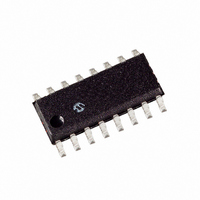RE46C143S16F Microchip Technology, RE46C143S16F Datasheet - Page 9

RE46C143S16F
Manufacturer Part Number
RE46C143S16F
Description
IC SMOKE DETECTOR CMOS 16-SOIC
Manufacturer
Microchip Technology
Type
Smoke Detectorr
Datasheet
1.RE46C143S16F.pdf
(12 pages)
Specifications of RE46C143S16F
Package / Case
16-SOIC (3.9mm Width)
Input Type
Logic
Output Type
Logic
Interface
CMOS
Current - Supply
8µA
Mounting Type
Surface Mount
Product
Driver ICs - Various
Supply Voltage (max)
12 V
Supply Voltage (min)
6 V
Supply Current
5.5 uA
Maximum Operating Temperature
+ 75 C
Mounting Style
SMD/SMT
Maximum Turn-off Delay Time
92 ms
Maximum Turn-on Delay Time
277 ms
Minimum Operating Temperature
- 25 C
Number Of Drivers
2
Number Of Outputs
4
Output Current
5 mA
Output Voltage
7 V
Ic Function
Photoelectric Smoke Detector IC With Interconnect
Supply Voltage Range
6V To 12V
Operating Temperature Range
-25°C To +75°C
Digital Ic Case Style
SOIC
No. Of Pins
16
Svhc
No SVHC
Rohs Compliant
Yes
Lead Free Status / RoHS Status
Lead free / RoHS Compliant
Lead Free Status / RoHS Status
Lead free / RoHS Compliant, Lead free / RoHS Compliant
RE46C143
CMOS Photoelectric Smoke Detector ASIC with Interconnect
Product Specification
Low Battery and Chamber Test – In standby an internal reference is compared to the voltage divided VDD supply.
Low battery status is latched at the conclusion of the LED pulse. The horn will chirp for 10ms every 40 seconds
until the low battery condition no longer exists. In standby a chamber test is also performed every 40 seconds by
switching to the high gain capacitor C1 and sensing the photo chamber background reflections. Two consecutive
chamber tests failures will also cause the horn to chirp for 10mS every 40 seconds. The low battery chirp occurs
next to the LED pulse and the failed chamber test chirp 20 seconds later. The low battery and chamber tests are
not performed in a local or remote alarm condition. The low battery alarm threshold is approximately equal to
((5*R15)/R14)+5 where R15 and R16 are in the same units.
Diagnostic Mode – In addition to the normal function of the TEST input a special diagnostic mode is available for
calibration and test of the smoke detector. Taking the TEST pin below VSS and sourcing ~300uA out of the pin
for 1 clock cycle will enable the diagnostic mode. In the diagnostic mode some of the pin functions are redefined.
Refer to the table below for redefined pin functions in the diagnostic mode. In addition in this mode STROBE is
always enabled and the IRED is pulsed at the clock rate of 10mS nominal.
Pin Name
IO
LBSET
FEED
COSC
HORNB
LED
© 2009 Microchip Technology Inc.
Pin Number
15
10
12
11
8
7
If desired this pin can be driven by an external clock.
This pin becomes the smoke integrator output. A high level indicates that an alarm
Disabled as an output. A high on this pin directs the photo amplifier output to pin C1
(1) or C2 (2), determined by the level on LBSET (15). Amplification occurs during
the IRED active time.
If IO is high then this pin controls the gain capacitor that is used. If LBSET is low
then normal gain is selected and the photo amp output appears on C1 (1). If LBSET
is high then high gain is selected and the photo amp output is on C2 (2).
If LBSET (15) is low then taking this input high will enable hysteresis, which is a
nominal 10% gain increase in normal gain mode.
condition has been detected.
The LED pin is used as a low battery indicator. For VDD above the low battery
threshold the open drain NMOS is off. If VDD falls below the threshold the NMOS
turns on.
Description
A Subsidiary of Microchip Technology Inc.
R&E International
DS22178B-page 9











